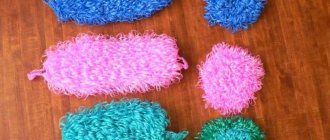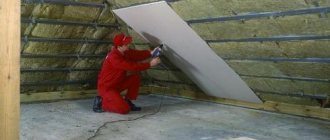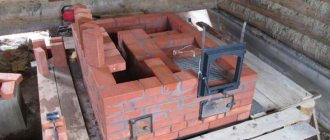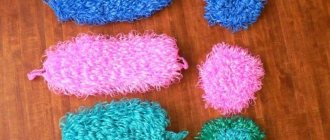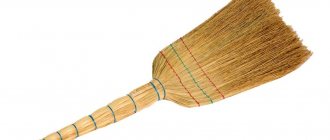What are “liquid nails” and how to use them
The popular name “liquid nails” is firmly rooted, although in fact it is a type of glue used in construction and during construction and installation work (CEM). The name comes from the English language, which means a direct translation of Liquid Nails - liquid nails.
If you use a gun, the work will be easier
In Russia, a similar glue appeared in the mid-90s and gained popularity among professional builders and in everyday life among folk craftsmen. Russian liquid nails have successfully entered the building materials market, but if you do not know how to use liquid nails correctly, you can ruin the structures being glued together. It is important to understand what the adhesive described below is and how to use it. You also need to know how and with what liquid nails are washed to eliminate inaccuracies in the work.
Correct use of LG stems from an understanding of the properties. Since it is an adhesive material, its task is to glue various materials and structures together. Liquid nails help in carrying out construction and installation work, save time, and increase the efficiency of labor costs. These types of glue consist of various polymer compounds, the main one of which is synthetic rubber. An important advantage is that the adhesive does not pierce the structures being glued, does not rust like real nails and does not require the use of a hammer. The big advantage of LG is the bonding of materials of dissimilar structure to each other - ceramics, gypsum, wood and concrete. Therefore, the area where LGs are used is wide:
- Repair work when finishing premises.
- Construction.
- Interior design.
- Furniture production and interior.
Cleaning the surface of liquid nails - a note for beginners
Having understood what liquid nails are and having studied their technical characteristics, let’s look at how to remove stains from a hardened composition. In any case, cleaning skills will come in handy, because glue is widely used not only in construction, but also for minor repairs. To quickly remove a stain, you will need:
- solvent;
- special cleaner;
- scraper;
- water;
- sponge.
Liquid nails as a sealant
If you have just recently discovered a stain and it has not yet dried, to remove it it will be enough to use warm water with a few drops of mineral solvent diluted in it. This mixture is quite effective and safe for most types of coatings, from varnished wood to gloss.
If the stain has completely hardened, you will need to use a stronger cleaner to remove it. It can be purchased at any construction supply store. Having prepared the product, you need to dip a sponge into it, apply it to the glue stain and hold it there for 20-30 seconds. Next, put the sponge aside and begin scrubbing the stain with a scraper. This must be done extremely carefully so as not to damage the surface. Also, do not forget that it is necessary to dip the sponge into the cleaner only after wearing gloves. Do not squeeze the sponge with your hands, trying to squeeze the cleaner out of it, otherwise it may splash into your eyes.
Removing liquid nails
Please note that although liquid nails can withstand temperature changes, they are not at all resistant to exposure to sunlight. This can be used to remove stubborn stains. Before applying the cleaner to the surface, place the stained item in the sun and leave it there for several hours. After this, you can apply a sponge with cleaner and scrape off the glue.
Where and how to use liquid nails
Since the requirements for the adhesive material are different in different situations, the modifications of such adhesive differ. Liquid nails are produced, varying in price and having different qualities and characteristics. The main property is how much load the structure glued with this composition can withstand. The adhesive ability of the material determines the quality and cost. Therefore, when purchasing liquid nails, you should understand what loads they must withstand, what materials need to be fastened and how to use liquid nails. You should not overpay by buying expensive material if you need to perform simple steps.
LG can be used to glue fallen tiles
Here are the recommended instructions for the use and application of LG:
- Initially, study the instructions included with the material. Since the adhesive material is based on both solvent and water, the work technology will require certain actions. In the first option, you should make sure that the rooms where the work is carried out are well ventilated or carry out the work outside the room. With water-based glue, work is performed at a temperature not lower than +5 degrees.
- The surfaces to be bonded are thoroughly degreased and cleaned, since dirty, dusty and wet surfaces do not adhere well to each other. Better bonding will be achieved by applying small notches on the surfaces to be glued - rough surfaces provide a high-quality connection.
- To accurately apply glue, use a mounting gun similar to that used when applying construction foam.
- The application of LG is carried out pointwise or in strips along the surface to be bonded, depending on the size of the structures being bonded.
- The surfaces with the applied glue are pressed tightly against each other with force and fixed in this position for a certain period of time (the duration is indicated on the packaging). Maintain the connection until completely dry. Sometimes it will take about a day.
- Excess and squeezed out glue residues are removed with a damp cloth.
It is necessary to remember about the shelf life of LG, which does not exceed one year from the date of release of the glue. Therefore, you should not stock it in large quantities for future use.
A simple method of applying sealant without a gun
First you need to prepare everything you need, namely:
- Molar tape;
- Soft napkins, cloths;
- Spray bottle with soap solution;
- Solvent;
- Rubber or plastic spatula (for adjustment work);
- Sealant;
- Medical syringe 20 ml;
- A block, a stick, a pipe for squeezing out the product.
Before application, it is recommended to degrease the surface thoroughly using a solvent. After which the area near the future seam is covered with masking tape.
To squeeze out sealant without a gun, you will need the tube itself, a syringe and some kind of bar (it should be smaller in diameter than the container).
Next you need to do the following:
- Pull the rod out of the syringe;
- Cut off the tip of the sealant tube;
- Place the block on the floor (its length should be sufficient, about 20 cm);
- An open syringe is applied to the end of the balloon and the product is squeezed into it using the tube resting on the bar.
Then you can easily work with the sealant from the syringe by inserting the core into it. It may be even more convenient than using a standard thick tip.
In addition to the block, you can use any other available material. Possibly the remains of some pipes. A suitable “support” can be found in every home.
The sealant must be applied evenly. The required amount of substance must be applied at one time. Next, the product is lightly sprayed with soapy water to form an even seam.
Using a spatula, the sealant is distributed over the surface to fill voids. The movement should also be continuous and calm. Moderately soft. It is important to maintain the angle of position. If the line is interrupted, the alignment process begins again.
When everything has turned out nice and smooth, carefully remove the masking tape and wipe off the remaining sealant with napkins.
From the above, we can conclude that the lack of a gun for squeezing out sealant is not an obstacle to its use. It is quite possible to cope with the materials available in every home.
New publications are published daily on our Yandex.Zen channel
>
How to choose and use a pistol for burning gas correctly
When using liquid nails, it is recommended to apply them using a specialized nail gun. This will allow you to more accurately apply the composition to the surfaces to be bonded and will prevent unnecessary consumption of material. The principle of operation of a construction gun is similar to using a syringe, so even a beginner can use it. There are some different modifications of mounting guns: with and without reverse stroke of the piston. The former are more often used in domestic conditions, with low glue consumption, and the latter - on an industrial scale.
There are numerous varieties of liquid nails available in stores. An inexperienced person encountering this material for the first time will have the difficult task of choosing the right glue. According to the principle: to be inexpensive and “angry”. They start from the instructions for using LG, which are attached to the product or printed on the packaging, but this will take more than one hour. Sales consultants are not always competent to clearly make a choice. Therefore, before going to the store, you should prepare in advance.
LG is used to seal the bathroom
Here are a few criteria and subtleties on the basis of which LG is chosen:
- For fastening heavy structures - finishing with stone or porcelain stoneware, silicone or neprene-based adhesives, such as “Moment Montazh” (Henkel), are better suited.
- For fastening materials that do not have a large specific gravity, such as polystyrene, plastic, water-based LGs, such as “Moment Installation Super Strong,” are more effective.
- Water-based LGs are not suitable for fastening polypropylene, polyethylene, Teflon and other similar materials.
- Neoprene-based adhesives (LN601 Macco or Multi-Purpose) are the most versatile for indoor work. They perfectly glue plywood, plasterboard, wooden materials, as well as plastic, metal and chipboard. But they are not at all suitable for installing and fastening mirrors/tiles in rooms with high humidity.
Video review for craftsmen:
Which liquid nails are best to use?
Today, the buyer is offered several types of liquid nails. The cost is determined depending on the type and purpose.
Deciding which type to use can be difficult
A common type is water-based nails. The main purpose is to fasten materials with a porous surface. The disadvantage of such nails is that they cannot be used in rooms with high humidity. More precisely, you can use them there, but they take a long time to dry, especially since under constant exposure to moisture the nails lose their adhesion properties and, as a result, will not hold the surfaces to be glued together.
An example of use is gluing decorative elements to the ceiling. These nails are cheap due to the restrictions on the types of work where they are used.
The second type, which is based on an organic solvent, is unpleasant due to its pungent odor; safety precautions must be observed when working with them. Excessive saturation with vapors leads to loss of consciousness and other health problems. But this look is universal. A distinctive feature is high strength and reliability. Liquid nails of this type can withstand a lot of weight.
The cost of these nails is slightly higher than water-based compounds.
Glue liquid nails: types and purpose
The characteristics of the drug are determined by its composition. There are two types.
Water soluble
Their base is acrylic copolymers, PVC or polyurethane. They have fairly high adhesion to most building materials, but there are exceptions. For example, polyurethane solutions cannot be used on Teflon and polyethylene, and acrylic solutions “work” only on porous substrates. Moreover, they are all environmentally friendly. The main disadvantage is considered to be destruction at subzero temperatures.
Organosoluble
To understand what liquid nails of this type are, you need to know: the basis of the composition is synthetic rubber. This gives them greater strength and better adhesion. The drugs set quickly and are completely stable at low temperatures. They are successfully used even in unheated buildings. One of the disadvantages is the presence of a pungent odor; for this reason, you should work with pastes only in ventilated areas. They may ignite during application and subsequent curing.
Instagram vorobey_vodogrey
Liquid nails are used for gluing a wide variety of materials. The drugs set quickly and are completely stable at low temperatures
The scope of application of solutions is very wide. You can glue tiles, dissimilar and homogeneous parts made of metal, ceramics, fiberboard, chipboard, wood, brick, glass, polystyrene onto liquid nails. The glued area can withstand loads of up to 80 kg/sq.m. cm, looks aesthetically pleasing. It is possible to connect surfaces that are not completely adjacent. The preparation will fill the unevenness; this will not affect the strength of the resulting joint.
Advantages of liquid nails: why they are convenient to use
In total and in terms of the volume of work, liquid nails are inferior to regular nails, although sometimes the opposite effect is obtained. It is more profitable to use liquid nails. If we are talking about aesthetics, then ordinary nails, no matter how hard they are driven in, are visible, so additional effort and money will be required to hide the heads.
Liquid nails easily hide joints and are not visible. Liquid nails look like a whitish or clear paste that is squeezed onto the attachment point. Moreover, they are fixed in a small amount, but there are enough attachment points. Depending on the type of surfaces that are attached, the step is from 3 to 15 cm.
Advantages of liquid nails:
Which is better: heated floors or radiators?
Warm floorBatteries
- Versatility - they can be used to fix any material;
- Non-toxic - even solvent-based nails are not harmful once completely dry;
- Moisture resistance - moisture is not a problem for such a material, but for latex-based nails the opposite is true;
- Holding a load of about 100 kg per square meter is a useful tool for various jobs;
- Liquid nails, unlike ordinary nails, are easy to apply and it is difficult to damage the surface with them; in addition, if you do not allow them to harden, wiping the nails off the surface will not be difficult with a damp cloth.
Liquid nails are distinguished by their long-term storage. They start work at any time, they do not need special training or specialized tools.
Some useful tips for working with glue
Any installation adhesive requires care and precautions. Without reading the instructions, you risk damaging furniture, flooring and other coverings, as well as harming yourself and others.
12 useful tips for working with liquid nails, study them carefully:
- Use spot or continuous application. The second method is relevant for increased loads on the item and its storage at high humidity. The first method will save glue.
- Cover large items with a layer of glue in the form of a snake or mesh to cover more surface area.
- For better adhesion of areas, degrease them first. Acetone, gasoline and other solvent will do. Get rid of moisture and dirt, then the objects will be glued together as firmly as possible. Sometimes you have to resort to grinding.
- If the glue sets in a matter of minutes, then use a press for better results. Apply pressure to the areas to be glued for the required time.
- Remove glue that has come out beyond the seam immediately with a dry and clean piece of cloth, sponge or napkin. Once the glue sets and hardens, it will be very difficult to remove. In order not to run to the hardware store for special tools, get rid of the excess immediately. Sometimes a sharp mounting blade helps.
- Do not use the glued object for at least 24 hours to ensure the strongest possible connection.
- Determine the required amount of glue. If you apply more liquid nails, including at joints, you will not increase the level of strength, but will only extend the drying time of the composition. There should be enough glue, not too much and not too little. The skill of determining “by eye” comes with experience.
- Do not fasten the parts immediately after applying the glue, but let it soak in for 5-7 minutes. After this time, connect and squeeze the items well. It is not the time that matters, but the strength of the compression. It is enough to hold the items for two minutes and then send them to dry. This way you will achieve the highest seam strength.
- Do not use liquid nails after the expiration date.
- Make sure that the packaging of liquid nails is sealed. If the packaging is damaged, this composition may have already dried out or deteriorated.
- When pressing the piston of the gun, make sure that the force is the same, otherwise the glue seam will turn out to be uneven.
- Work in personal protective equipment, be sure to ventilate the room when using solvent-soluble adhesive compositions. If the substance comes into contact with your skin, wash it off immediately with plenty of running water.
Area of use and differences between types
Liquid nails are popular in construction and renovation. Purchase them for any task. The cost is low, equal to half the cost of polyurethane foam.
A common example of using liquid nails is fastening materials to brick structures, gluing wooden surfaces, fixing fiberboard and chipboard sheets. Nails are also used for gluing ceramics, polystyrene, glass or even metal; with their help it is easy to glue foam.
A useful function due to which liquid nails are valued by professional builders is gluing surfaces that do not fit tightly together. When using liquid nails, to fix such surfaces you will need to squeeze out a little more from the tube.
Restrictions on the use of liquid nails - they are not used for gluing damp or damp wood; they cannot be used to glue an aquarium, not even because of constant contact with water, but because of the slow decomposition and subsequent poisoning of the inhabitants. Silicone sealant is suitable for these purposes.
Liquid nails are used in small decorations, when you need to efficiently but discreetly fix an element on a wall or ceiling, glue a torn part, etc.
Liquid nails are purchased from different manufacturers and in different volumes, which also affects the price.
If you perform a small amount of work, then a minimum amount of liquid nails is enough; for a large front, purchase a large tube. The larger the volume, the lower the total cost.
Compound
Liquid nails are a viscous mass, the consistency of which is provided by an aqueous or organic solvent. The nature of the solvent forms the basis for the classification of adhesives with increased adhesion.
Composites with water, in addition to the mineral component, contain one of the following polymers:
- polyurethane;
- polyvinyl acetate;
- macromolecule cross-linked from acrylic monomers.
Liquid nails based on organic solvents, in addition to the inorganic component, contain synthetic polymers similar to rubber. A large number of liquid organic substances can be used as solvents.
Undesirable options due to high toxicity are toluene and acetone. Manufacturers are tempted to introduce them into composites because toluene increases surface adhesion, and acetone speeds up the drying process of the compound. A sign indicating the presence of toluene and acetone in liquid nails is an unbearable suffocating odor.
A common feature of the products of both groups is the presence of filler in the form of a finely ground fraction, which only in this state can provide the required gluing.
Rules for using LG
To achieve the effect of using liquid nails, apply them to a dry and grease-free surface.
Apply either pointwise with small increments, or in stripes. Do this quickly so that you can then press the surfaces to be glued together. They are fixed in a tight position to each other for several minutes (2-3), after which it remains to wait for complete drying.
To find out how long liquid nails take to dry, the answer to this question is on the label. Depending on the manufacturer and type of nails, the time varies. This period lasts from 18 hours to a day. During this time, they do not create additional load on the bonded surfaces.
Users make the same mistake, which does not give a positive effect and increases the consumption of nails. They are applied to only one surface, the second is degreased and cleaned of dust.
Nails are applied using a special gun, which is designed for gluing materials in hard-to-reach places.
Squeeze out liquid nails without it, pressing on the bottom with a suitable object. But it is worth cautioning: the bottom will be damaged and then the liquid nails will leak out, making it impossible to use them.
How to use liquid nails: with and without a gun
When carrying out repair and construction, finishing, installation work, as well as work on decorating a room, construction glue is used, better known in everyday life as liquid nails - Liquid Nails. This special construction adhesive is made on the basis of polymers and rubber and is supplied to the market in tubes of various capacities or in cylindrical cartridges (tubes). For the convenience of working with cartridges, it is customary to use a special construction (installation) gun for liquid nails, which is designed for dosed application of glue to the surfaces to be glued.
Use LG correctly!
This gun is used for working with various sealants, which are packaged in similar special tubes with a standard volume of 310 ml. This tool got its name because of the principle of operation - the adhesive composition is applied by pressing on the trigger, which is why it is compared with the weapon of the same name. Although the process of applying glue itself is more similar to the operation of a syringe.
When choosing liquid nails, study the instructions on the packaging to find out whether this construction adhesive is suitable for the types of surfaces that are to be glued.
If the work is planned to be carried out outdoors or in rooms with high humidity, then choose a construction adhesive that contains a solvent. For dry rooms, less toxic acrylic liquid nails are better suited.
Instructions for using liquid nails without a gun
How to install a floor plinth with glue
In cases where it is not possible to use a construction gun, you can make do with improvised means. Of course, they cannot become a full-fledged replacement for a pistol. Without a special tool, it will not be possible to apply the composition evenly. And installation work will become more difficult.
Without a gun, liquid nails will be more difficult to use
Let's look at how to use liquid nails without a gun if the glue is placed in a solid tube:
- You need to select a flat, round object that will have the same diameter as the bottom of the cartridge. To do this, you can take a bottle cap, which will act as a piston.
- A round device is attached to the bottom of a tube of liquid nails.
- Then a dosing cone is installed on the neck. Its tip, depending on the design, needs to be opened or cut off.
- In addition, you will need an additional device to squeeze the glue out of the tube. A hammer handle or any other object of a similar shape is suitable for these purposes.
- By pressing the handle of a hammer on a homemade piston (bottle cap), you need to squeeze out a portion of the adhesive composition.
When applying construction adhesive without a gun, you must act with extreme caution and precision. This is especially true for cartridges made of cardboard or plastic. With strong pressure, the walls of the tube may become wrinkled
If the cartridge is damaged, further use will become impossible.
With strong pressure, the walls of the tube may become wrinkled. If the cartridge is damaged, its further use will become impossible.
Soft packaging is also available on sale. To apply glue, just make a hole in it to squeeze out the paste. This method is not very good, since it will not be possible to control the volume of the composition that comes out of the container. In addition, the seam turns out uneven.
Liquid nails must be applied manually as carefully and slowly as possible.
Liquid nails are suitable for fixing and installing various elements. The main condition for a quality result is the correct choice of composition. In this case, the structure and properties of the materials being bonded, as well as the conditions under which they will be used, must be taken into account.
The gun allows you to economically and evenly distribute the composition over the surface, so it is still advisable to purchase this tool for work. Liquid nails can also be applied using improvised means.
However, in any case, you should follow the instructions and be careful.
Liquid nails are a modern adhesive that will become indispensable in construction and repair work. Thanks to the large selection of compounds for gluing various materials, it will not be difficult to choose the best option.
Which construction gun is best to use?
Like similar construction tools, mounting guns are divided into two main types: household (mechanical) and professional (pneumatic and battery-powered).
Professional ones are usually used to apply all kinds of sealants, and three types of mechanical guns are used to work with liquid nails.
An inexpensive type of liquid nail gun is a semi-body gun. Such pistols are short-lived and not easy to use. The stand for the cartridge with construction adhesive seems to be cut in half and during operation the tube often warps, which interferes with the smooth movement of the rod.
For the home craftsman, there is a simple solution to this problem - the tube is tightly fixed in the gun body using wide tape. Wrap tape around the tube placed in the body, closer to the handle. At the same time, they protect the branded sticker, which is located on the case. There is a manufacturer’s warranty for such working tools, and in order for the gun, if necessary, to be returned under warranty, it is advisable not to damage this sticker.
The next type of mounting gun is the most popular among buyers and is called skeleton. It is a little more expensive than the half-body, but it holds the liquid nail cartridge more securely, allowing the glue to flow more smoothly. However, even here, tape is used to secure the tube tightly, since cases for inexpensive pistols are made of aluminum, which does not provide sufficient rigidity.
The most convenient for working with liquid nails is a tubular (syringe) gun. It tightly fixes the cartridge with glue or sealant, and is used not only for working with tubes, but also with foil packaging, which is used for packaging certain types of sealants.
Design and principle of operation of a pistol for burning gas
The design of a construction gun for liquid nails is universally simple and consists of six main elements:
- Platforms for holding the cartridge;
- Handles (in some models rubberized);
- Trigger;
- Feed rod;
- A pusher disk attached to the rod;
- Locking (fixing) tongue;
The principle of operation of this tool is as follows: after the cartridge with liquid nails is installed in the gun platform, pressing the trigger activates the rod, which pushes the disk. In turn, the disk exerts pressure on the bottom of the tube and squeezes the contents through the hole in the tip of the tube onto the surface.
In more expensive models, after releasing the trigger, the mechanism moves the rod back a little. This relieves excess pressure in the tube and prevents excess glue from leaking out.
If the sealant is packaged in a suitable container
A number of manufacturers complete the container with a disposable “syringe”. There is only one drawback - sealant that has not been used for its intended purpose cannot be used subsequently. Therefore, it is worth taking a closer look at the shape of the container - if it has protrusions into which you can insert your fingers, then such a sealant is not easy, but it is possible to squeeze out without any devices.
Other methods involve disassembling the container. To do this you need:
- Carefully remove the spout from the bottle. Direct the container itself in the opposite direction (there should be no people there).
- Cut off the end of the tube using a sharp knife.
- Place the spout in its original place, having first removed the cap from it.
- Insert the handle of a regular plumbing hammer into the bottom of the tube. The T-shaped profile of such an “extruder” will create a fairly uniform pressure.
How to use a burning gun correctly
Before starting to work with the mounting gun, open the glue cartridge. To do this, unscrew the conical tip, if it is screwed, and use a sharp knife to carefully cut off the head of the tube immediately above the thread. After this, screw the tip onto the head of the cylinder and remove the cap.
Next, the edge of the cone is cut so that the cut diameter is slightly less than the thickness of the required layer of liquid glue seam. Then put the cap back on. Some manufacturers place a protective bottom on the bottom of the tube, which must be removed.
The construction adhesive cartridge is ready for installation.
In order to install the cartridge into the gun body you must:
- Taking the gun by the handle, press the locking tab with your thumb until it stops;
- Pull the rod all the way towards you, freeing the platform for installing the cartridge;
- Place the cartridge into the tool body;
- By lightly pressing the trigger, push the disk attached to the rod to the base of the tube until it stops;
- Remove the cap from the tip and get to work.
If a “syringe” gun is used for work, then in order to insert the tube into the body, unscrew the upper fixing ring and remove the internal insert from it.
When fixing the cartridge on the rod, it is important not to use excessive force when bringing the pusher disk to the base, so that excess pressure does not build up in the tube before using the glue. Otherwise, when you remove the cap from the tip, some of the glue will leak out.
The following video shows the instructions described above, which clearly demonstrates the stages of preparing a gun for liquid nails and sealant for use:
Description of the device operation process
How to choose tile adhesive
First you need to figure out how to properly place the container with “liquid nails”. It is unacceptable that the seal of the package is broken if installed incorrectly, otherwise the glue will dry out and it will hardly be possible to use it.
Before using the gun, you need to prepare the following things:
- a bottle of “liquid nails”;
- sharpened knife;
- glasses and gloves for protection;
- a breathing mask if you plan to use an adhesive mixture prepared yourself;
- a dry rag to remove excess adhesive;
- a solvent, due to the fact that the glue may accidentally get on the skin or some surface.
The principle of operation of the tool is quite simple - after pressure is applied to the cylinder mechanically, the adhesive substance “comes out” of the cylinder. The pressure is provided by a rod, which is activated by acting on the trigger lever. In pneumatic mounting units, pressure is supplied by air. Difficulties arise when you need to choose the appropriate glue. As a rule, manufacturers use the same standards, that is, glue can be selected for any gun.
If you use a skeleton or semi-open pistol, removing blockages occurs quite quickly. First, check to see if the container with “liquid nails” has a special restrictive bottom. If it is there, delete it.
Next, pull the rod out of the device; to do this, mechanically act on the lever and remove the rod. Instead, install the tube and press the release lever 2-3 times with little force to strengthen the balloon.
Poke a hole in the container, glue will flow through it to the tip.
If you decide to use a tubular tool, it is charged differently. First you need to make a hole in a container with “liquid nails”. The container with the adhesive must be fixed so that the cut end of the container is directed towards the tip from where the glue will “come out”. Before installing the cartridge into the tool, you must remove the rod.
As a rule, the kit comes with several nozzles with tips; use one of them to tighten the cylinder. If there is no hole on the tip, then you need to cut off a very small part with a knife at an angle of 45 degrees. Then gently press the trigger lever and move the glue along the pre-applied markings. If you use a skeletal or semi-open instrument, then in order to fill the void in the cap, you must first press the trigger lever several times, and then perform the actions smoothly.
In electric and battery-powered mechanisms, pressing the release lever controls the rate of release of the adhesive substance, so if you have never used such a complex unit before, it is better to start with inconspicuous places.
Before the gluing procedure, the surfaces must be cleaned and degreased. Then apply “liquid nails” in a thin layer or in dots. If the surfaces to be glued have a large area, for example, ceramic tiles, then it is necessary to apply the adhesive on them in the form of a snake or mesh. Afterwards, the surfaces to be glued need to be pressed against each other; if necessary, they should be fixed with special structures. Flat parts can be placed under the press. Some types of glue set within 1-2 minutes.
As a rule, complete gluing of surfaces occurs after 12 hours, sometimes after a day.
Safety rules and completion of work with liquid nails
When working with a mounting gun, use extreme care and caution. Apply glue in small portions, strictly to pre-designated areas of the surfaces to be glued. Avoid contact with skin or foreign objects.
If drops of glue get on the gun, it should be washed immediately to prevent it from drying out. During breaks between jobs, cover the cartridge spout with a cap to prevent the liquid glue inside from drying out.
After finishing the work, the used cartridge is removed from the gun, and the tool is washed in a warm soapy solution and allowed to dry. In order to remove the used cartridge, press the locking tab and pull the rod with the pusher disk towards you. After which the tube is removed from the gun.
Liquid nails Moment: how to use correctly
Today, a construction adhesive called “liquid nails” is used to connect various surfaces. The substance is used in construction, finishing and repair work.
The classic nail composition is based on synthetic rubber and a special type of clay mined in Texas. The addition of titanium dioxide gives the glue a white color. To reduce the cost, chalk is used (instead of expensive clay), which accordingly worsens the quality.
The toluene contained in the composition is responsible for adhesion, but slows down drying. To reduce this time, acetone is added to the material.
These components are toxic and have a negative effect on the human body. The presence of harmful substances is indicated by a sharp, unpleasant odor. They are not included in modern products.
Main types of liquid nails: which ones are best to use
Nails are divided into types depending on the base used:
- Water-based nails are called acrylic nails. Used for bonding surfaces with a porous structure. Not recommended for use in conditions of high humidity.
- Neoprene, based on organic solvents. They are used for fastening various materials and can withstand high loads. But they have a suffocating odor and are harmful to health, so precautions must be taken.
The pre-setting time varies, depending on the type of glue, from 5 to 30 minutes. The material finally hardens within 24 hours. The instructions indicated on the cylinder contain detailed instructions on the time of complete and partial setting. There are materials with a short hardening period - 5 minutes, such as “Moment” liquid nails.
Advantages and Disadvantages
Liquid nails, like many other construction materials, have their pros and cons, which you need to know about before you buy and start using glue. If we talk about the positive aspects of this universal glue, we can note the following points:
- the glue does not cause any harm to the working surface and does not allow rust to form in the future;
- They tolerate low temperatures well and are among the environmentally friendly materials;
- very fast hardening time of liquid nails, and there is no difference what kind of environment surrounds them;
- when using such glue, you should not use any kind of impact instruments;
- the surfaces that were connected with this glue adhere very firmly to each other;
- Liquid nails allow you to glue different kinds of materials, regardless of what kind of surface they have: smooth or rough.
This situation was not without several disadvantages, which are very important to consider when working with liquid nails. The main disadvantages include the following:
- when working with universal instant-installation glue, it is advisable to use a respirator, because the material may have an extremely unpleasant odor for some time;
- If you are using the material for the first time or have little experience working with them, then using them is quite difficult.
Water-based liquid nails area and instructions for use video
Water-based glue is very popular. It has several other disadvantages besides the smell. Such nails are not recommended for connecting metal surfaces. Low temperatures cause the base of liquid water nails to begin to deteriorate. In order for the glue to dry faster, you need to use special heating.
Features of LGs: how to best use them
Liquid nails are widely used in repair and construction work due to the high strength properties of the connection - 80 t/m2. They are used to glue elements that are loosely adjacent to each other.
They glue metal, glass, polystyrene, ceramics, wood and brick structures. Despite the wide range of applications, manufacturers do not recommend fastening wet or damp wood or aquarium parts.
The advantages are:
- Resistance to moisture (except acrylic);
- The surface does not deteriorate;
- High load;
- Even dissimilar elements are glued together.
High-strength adhesive joints (higher than the strength of concrete) are provided by “Titebond” liquid nails. In addition to reliability, ease of use also influenced widespread use.
What is it used for?
Recommended uses include a variety of products including wood, silicate glass, ceramics, organic glass, aluminum alloys, natural cork, plasterboard, foam polymers, siding, wood fiber boards or shavings.
High-strength adhesives can be used to secure sinks and other plumbing fixtures, window and door frames, baseboards, countertops and mirrors. Sometimes craftsmen use liquid nails instead of sealants; they are used to insulate seams, fill microcavities, cracks in walls, ventilation ducts, and corner joints of design structures.
Note! Despite their versatility, it is not recommended to use high-strength composites in the manufacture and repair of aquariums and wood products with high humidity.
Which liquid nails are best to use: advantages of Titebond
Glue has become an indispensable assistant in repair and construction work of varying complexity. It allows you to glue elements made of stone, concrete, metal, wood. Liquid nails are applied to various surfaces.
The greatest effectiveness of glue is achieved by using the appropriate brand for a particular situation. The instructions describe in detail the areas of application of the products. But among the large number of species, common characteristics are distinguished:
- Practicality and ease of use. People who do not have the skills to carry out repair and construction work will be able to use “Titebond”;
- Applying material to uneven surfaces. In this case, the load is distributed evenly along the entire perimeter. This reduces the pressure exerted on the bonding site;
- Construction adhesive remains flexible after drying;
- Titebond liquid nails withstand vibration and are resistant to deformation;
- Retain properties for many years. Construction adhesive is resistant to temperature changes and chemical influences - acids, alkalis, salts.
How to remove liquid nails from plastic?
To remove fresh traces of liquid nails from the plastic base, it is recommended to use a rag and water. An alternative option is an oil composition (vaseline, vegetable and animal fats). Experts do not recommend using aggressive compounds or mechanical methods.
Frozen nails are removed from plastic using special removers. Before carrying out the procedure, it is worth studying the information for which surfaces the product is suitable.
Unlike other surfaces from which liquid nails are removed, plastic requires a more delicate approach. The material may be damaged when exposed to organic agents. Before using them, you need to test them: apply a drop of remover to the corner of the plastic base. If after 10-15 minutes there are no signs of deformation and no sticky layer forms on the surface, the liquid is allowed for use.
What brands of liquid nails can I use?
There are different options for liquid nails. Their characteristics determine the scope of application.
The series of adhesives based on synthetic rubber includes the following models:
- “Multi Purpose” (red tube). Bonds metal, plastic surfaces and foam. Recommended for use in conditions of high humidity. Used for gluing finishing materials: moldings, plastic panels, plaster, ceramics, composite. Not designed for gluing subfloors. For these purposes, it is better to choose a tube of green (Solvent Free) or yellow (Heavy Duty) color.
- “Tub Surround” (white tuba). Has increased flexibility and resistance to liquids. We recommend for gluing plastic parts of different hardnesses, bathtub interiors;
- “Heavy Duty” (yellow tube). An effective, durable construction adhesive. Reliably glues various elements. Heavy Duty is not water resistant and is not suitable for bonding polystyrene foam.
There are other brands made from excellent bases:
- “Solvent Free” (green tube) – a mixture of polymer emulsions;
- “Cove Base” (blue tube) – polymer emulsion;
- “Invisible Bond” (blue tube) – elastomeric polymer;
- PROvantage PU Premium – polyurethane.



